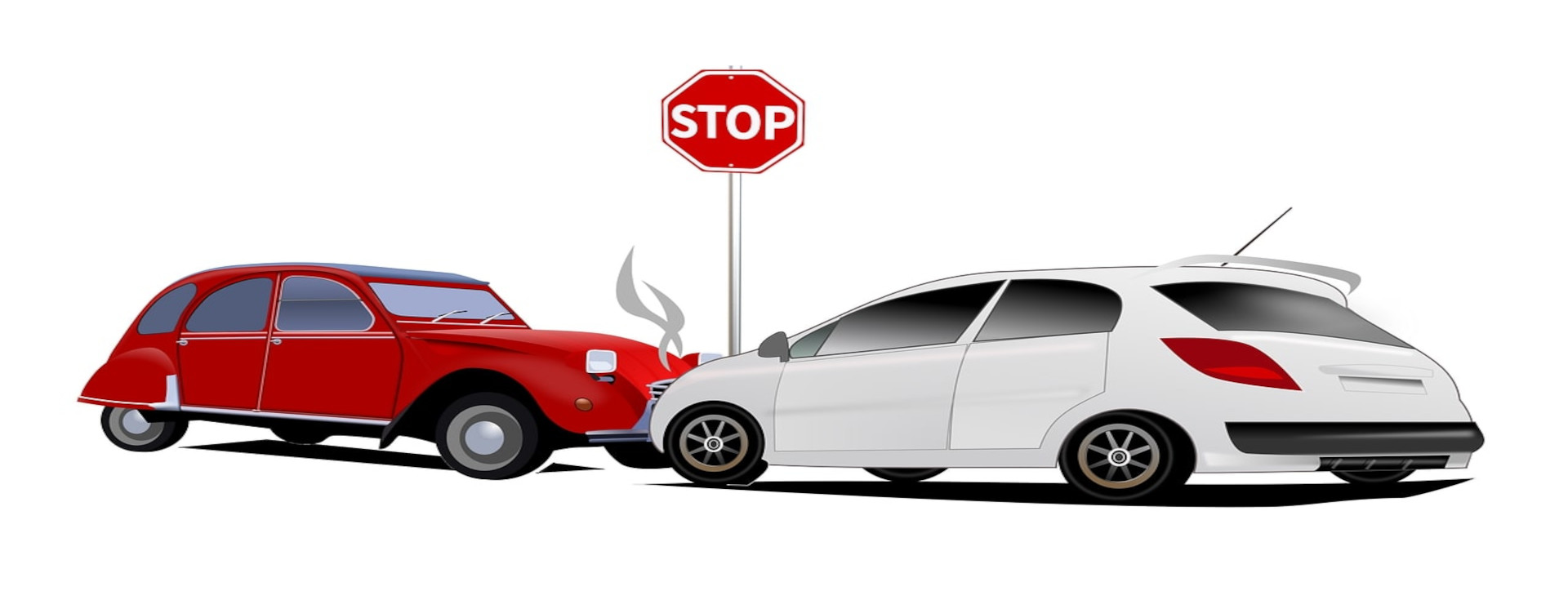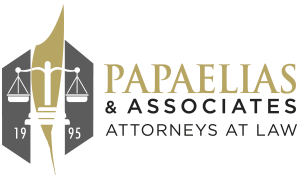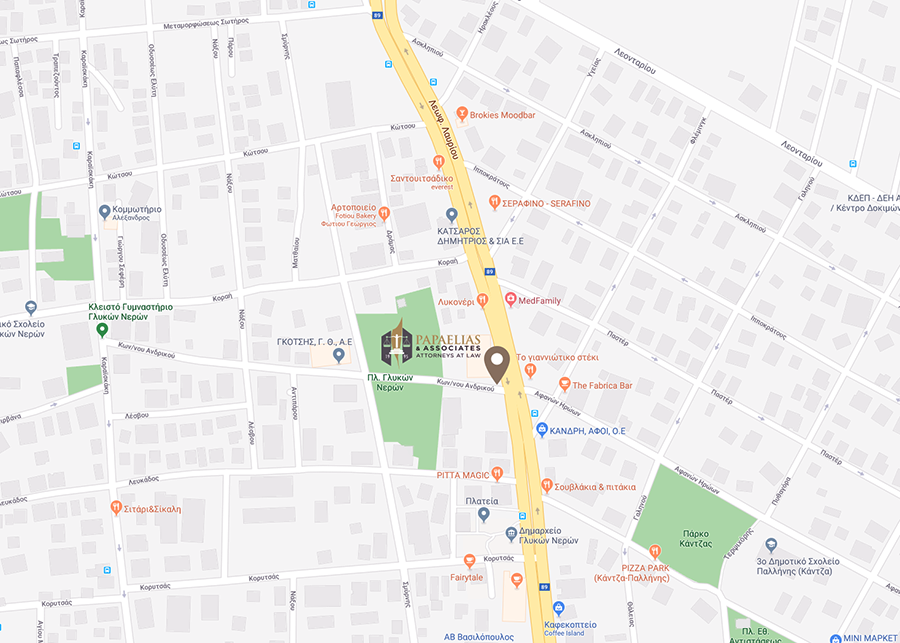Traffic Law
Traffic accidents cover a large percentage of the civil courts’ cases. The laws of compensation and civil liability apply on traffic accidents cases.
Civil liability: when a damage against a person occurs, the question arisen, is who is responsible to compensate the person suffered the damage. In traffic accidents, a third party may also be responsible to compensate due to a contract (i.e. an insurance contract) or due to tort liability, in cases where no contract exists. Tort liability requires fault or culpability of the person responsible of the accident. Under law 489/1979, every vehicle is required to have a valid insurance contract against money claims for damages caused to third parties. Thus, the tort liability of the liable driver to compensate becomes also a contract liability of the insurance company. Regardless of fault, the law provides for a no fault liability in limited situations, as in the case of Law C} L. v/1911, mainly for the injuries of bus passengers.
Damage is any damage caused to the tangible or intangible assets a person belongs, which have a monetary value, namely every adverse change on these assets. In addition to the property and health damage, mental suffering and pain (moral damage) are also included in the term of damage and are to be compensated. Every property loss, construed either as real/positive damage or as loss of profit, is also compensated. Furthermore, lawyer’s fees and judicial or extrajudicial, or even future, expenses are included in the compensation. It is not necessary for the victim to repair the vehicle, since this property has been already reduced by the damaging event-accident.
Persons liable to compensation are the driver responsible for the damage due to fault, his heirs, the owner/holder of the injurious vehicle, the principal or supervisor of the driver in service and the insurance company. These persons are held jointly and severally liable to compensate (apart from the heirs who are responsible according to their hereditary portion). As a result, the injured person (plaintiff) has a right to opt from whom he/she will be compensated (most likely the insurance company). The person, who will eventually compensate the injured person in full, may raise money claims against the other jointly and severally liable persons, according to the percentage of fault, that each and one of them can be held responsible.
Beneficial owner of the compensation is the person who suffers the damage (directly), his heirs, and the persons who have the right to claim services and alimony by the injured. In case of corporal damages, the spouse and the parents of the injured are also entitled to compensation. In case of death, beneficial owners, apart from the heirs, are also the persons entitled to alimony by the deceased. Especially for persons insured to the Social Insurance Institution, the claim for compensation is transferred ex officio to this Institution for every service or expense incurred.
Except from strict liability cases of L. C} L/1911, the compensation is normally based on the driver’s tort. The legal requirements are: Illegal behavior, fault, namely negligence or deceit, and causal link between the illegal behavior and the injurious effect. The police’s diagram of the place of the accident is very important evidence and, thus, one must not omit to call the police in case of accident. Any fault of the victim, i.e. violation of traffic regulations, not wearing safety helmet or seatbelt, accordingly reduces the money compensation, to the extent/percentage the injured person is responsible for the damage he suffered.
Possible compensation claims per event:
Α) Vehicle damage
The compensation may cover claims for vehicle damages, auto parts, working costs and leasing costs of another vehicle which is necessary for work purposes. In case of complete destruction of the vehicle, the commercial value of the vehicle on the day of the accident is to be restored, after taking into consideration possible loss and potential benefit.
Β) Corporal damages
Medical expenses, rehabilitation expenses, fees of doctors, physiotherapists, nurses, domestic workers, purchase of medicines and proppants, increased costs for special (‘’improved’’) alimentation, lost wages due to temporary incapacity for work, alimony to persons for whom the victim was responsible, every future loss due to the corporal damage (generally these are compensated with monthly installments, while the victim is obligated to limit, as much as possible the extent of damage, and is required not to worsen his situation i.e. the plaintiff is required not to reject opportunities for work). Under the article 930 of the Civil Code, paragraph 3, the plaintiff may also claim the amount he would have paid to a third person (i.e. nurse), for the provision of his/her health services to the plaintiff. Even in case these services are eventually provided to the plaintiff by his relatives without cost, the plaintiff may still claim the amount he would pay to a third person (i.e. nurse) for the same services. That is because the costless provision of services by the plaintiff’s relatives, does not exempt the liable person from his/her responsibility to compensate the plaintiff for these (fictional) expenses, on the grounds that someone else is legally obligated to financially support the victim of the accident. If this was the case, the liable person would be eventually benefited from the costless provision of the relatives’ services to the plaintiff and, thus, the liable person would unjustifiably avoid paying the compensation owed.
C) Moral damage
Moral damage is also to be compensated. Compensation for body disfigurement or permanent disability is a separate and additional claim, as long as it has an impact to the financial, family and social life of the victim.
D) Pain and suffering
Medical expenses, funeral expenses, compensation for persons entitled to alimony from the deceased and financial restoration of the victim’s family pain and suffering.
Exercise of the right: The lawsuits and disputes related to traffic accidents are under the jurisdiction of the judge of the Magistrate’s Court or the Court of First Instance, at the defendant’s place of residence, following the special legal process of traffic accidents, which ensures that court hearing will take place in a short period of time. The courts of the place of the accident have concurrent jurisdiction, in case of corporal damage and also in case of foreign vehicle.
It is common the traffic accident cases to be resolved before the case reaches the court. The attempt is usually initiated by the victim’s attorney and usually takes place between the injured client’s lawyer and the insurance company of the vehicle that caused the accident. The compromise that may come up ensures saving money and court fees, since the court procedure can last a long period with unpredictable results. Unfortunately, in practice, the court procedure is usually preferred, especially in case the insurance company does not recognize its client’s responsibility for the accident. In addition, sometimes, it is against the insurance company’s interests to pay immediate compensation. However, in cases that responsibility is unquestioned and the financial damage is not very high, it is highly suggested for the case to be solved out of court.
Finally, it must be mentioned that the statute of limitations provides that the lawsuit for compensation must be filed within five years from the time that the victim comes to know the damage and the responsible for compensation person. Even in case the victim does not know the responsible person, the lawsuit cannot be filed later than twenty years from the time of the accident.
However, there is a special time limitation for the lawsuit against the insurance company. The statute of limitations provides that the lawsuit against the insurance company shall not be filed later than two years from the accident(par.10 L.489/76 ). If the compensation lawsuit is not properly filed and delivered to the insurance company within two years, the plaintiff may then only be compensated by the driver responsible for the accident. The statute of limitation also provides that claims related to the L. C} L/1911 (bus passengers mainly) shall be filed within two years.







